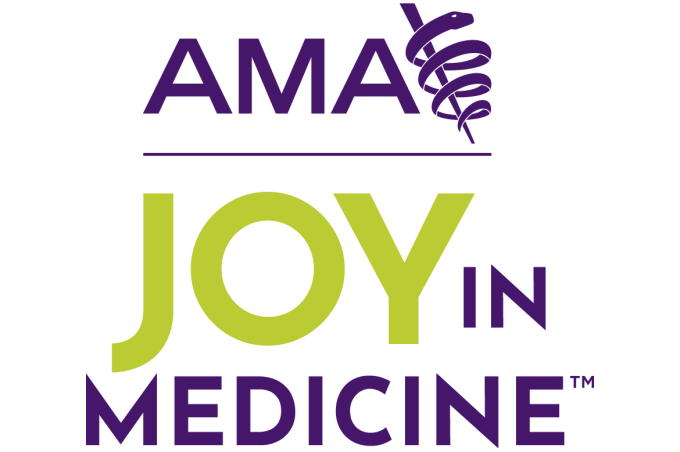Physician schedules often fail to block off the time required to complete nonpatient-facing tasks such as clinical documentation, patient messages and chart review. If this hidden time were accounted for, doctors could show that they have vastly reduced patient availability, given the amount of time that is required to complete these nonclinical tasks.
”Rather than reduce patients’ access to a doctor by blocking their schedules, it makes much more sense to delegate various tasks,” said R. John Sawyer, PhD, a neuropsychologist at Ochsner Health. He works with physicians and clinical teams struggling with burnout and job stress in his role as medical director of professional staff experience at Ochsner’s Office of Professional Well-Being.
“This helps the physicians keep a sustainable schedule and optimizes the function of each care team member,” Sawyer said. He believes this is important to maintain a healthy work-life balance for physicians.
“One of the top things we see in healthy clinician experience is that they have a schedule that’s flexible and adaptable to life—but that has to be balanced because there are always patients who need to be seen,” he said, asking “So how do we factor in all the non-face-to-face clinical work as time?”
Regarding how much time really is spent on documentation tasks, Sawyer suggests that ”if it were really blocked out for the physician, that would be a very expensive amount of time each week.”
That then raises the question: Who else should be doing that documentation or administrative task?
“If we can save two hours and give a clinician an hour of seeing patients and then that clinician gets to go home an hour earlier, that’s a win for everyone,” he said.
As the leader in physician well-being, the AMA is reducing physician burnout by removing administrative burdens and providing real-world solutions to help doctors rediscover the Joy in Medicine™.
Identify time spent in EHR
For health systems who want to really solve the burnout issue and create more sustainable schedules, the first step is to ask: How much time does a physician spend on clerical and documentation tasks? (Sawyer notes that this will vary by specialty and career stage.)
To uncover time spent, look to the EHR. At Ochsner Health, there is a report called Epic Signal that can be accessed by the information-services team to see how many minutes each physician is spending on a note or message and on patient care.
“It can get down to the granular detail,” Sawyer said. The goal is to uncover bad habits by clinicians and help them solve these problems. “For example, why are you at home at midnight in your notes when you should be sleeping or spending time with your family?”
“With Epic Signal, we can also compare physicians’ administrative habits to others in their specialty or clinic, which is really helpful especially for me when I coach physicians and their teams on how we can make a change and improve the environment,” he explained. “Oftentimes, though, the hard part about blocking time for nonclinical work for physicians is that in a room of 100 physicians, that nonclinical time will spread from eight minutes to 88 minutes.
“So it’s not predictable, because everyone does it a little bit different,” Sawyer said. “One solution may not work for a lot of physicians, so we have to think about the average and try to get folks to the average as much as possible for the documentation piece.”
Include the care team
Once a health system identifies how much time physicians are spending on clerical and documentation tasks, it’s time for action. Health systems can consider blocking time for the physician to complete necessary clerical work, but they should also think about having a care team member take on some of those tasks to reduce the need to block a physician’s time.
“In terms of schedule clarity and sustainability, we know how much time it’s going to take to do documentation,” Sawyer said. “So, what do we need to do in order to have it work?”
This is where having someone else on the care team step up to help is key. For example, at Ochsner Health, teams such as pharmacy and IT are rolling out major initiatives to improve practice efficiency and decrease inbox work.
Embrace technology
Another way to help reduce the documentation burden physicians are facing is through ambient listening and augmented intelligence (AI)—often called artificial intelligence.
With ambient listening, the process of note-writing can be streamlined. And generative AI can provide suggested answers for inbox messages and pre-visit summaries to support physicians, nonphysician providers and other health professionals.
Ochsner Health has found it helpful for support staff to have access to AI to avoid overloading physicians with tasks. The health system also uses well-being data to determine which departments, physicians or specialties could most benefit from the help.
Change expectations
“Another part of finding solutions is to understand who is coming into the workforce,” said Sawyer. “We could fill a room full of people who want to make jokes and argue about generations working together in terms of stereotypes and how they interact with each other. Health systems need to pay attention to what the changing expectations are.”
“For us, that’s why it’s important to think about the generational breakup in a workforce—what are the gender differences and the needs and wants in each specialty?” he explained. “What are we able to change, given that we have X number of surgeons who are under 40 and have young kids who want a different type of schedule?”
“It may mean that we have to hire more, or it may mean some surgeons work more hours than others,” Sawyer said. “Systems have to think about this in a broad way. Expectations are not universal.”
“We have to balance patient needs and operational needs, but also, we need to balance the needs of our workforce because people will just leave if they’re not happy,” he said. “If you want your health system to be attractive to physicians, you have to adjust expectations.”
Discover more from Sawyer about how to keep some things “out of sight, out of mind” to help doctors and say goodbye to “metric madness” to boost physician well-being.
Download the 2024 AMA Joy in Medicine™ magazine (log into your AMA account to view) to see whether your organization is part of the prestigious group of 130 organizations across 35 states that are currently recognized for their dedication to physician well-being.





